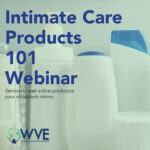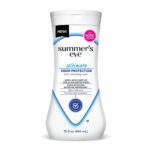Fragrance pollution is real – and should no longer get a sweetheart deal
UPDATE (4.15.21): Success! CARB votes unanimously to eliminate sweetheart deal for fragrance industry!
THANK YOU to all who contacted the California Air Resource Board (CARB) last month to tell them to eliminate the special exemption for fragranced consumer products. The newly amended regulations will no longer allow fragranced products to emit extra levels of smog-producing VOCs (volatile organic compounds) into our air. The fragrance industry and consumer products manufacturers lobbied hard to keep this unmerited exemption, but voices like yours speaking out for health and the environment won out. THANK YOU AGAIN!
Click here, to see how comments from individuals speaking out about fragrance outnumbered comments from industry significantly!
——————————————————-
 |
| Alex Scranton Director of Science and Research |
When we think of smog in the air, it is all too easy to assume it is mostly the fault of the exhaust of cars and trucks on the road. But recent research has confirmed that the consumer products we use in our homes every day are actually equal if not greater contributors to the volatile organic compounds (VOCs) that pollute our air.
The California Air Resource Board (CARB) is doing something about that – and are about to make some important decisions on further restricting the allowable amounts of smog-producing VOCs emitted by consumer products. Perhaps not surprisingly, industry voices are opposing some of the new restrictions, claiming it would be too burdensome to comply, and asking for the right to continue polluting our air.
Fragrance Chemicals and Air Pollution
One of the controversial issues at stake is the proposal to sunset the 2% fragrance exemption. What this exemption does is allow any consumer product to emit 2% more VOCs than would otherwise be allowed, simply because it contains fragrance. And while scented products are enjoyed by many, it begs the question of why exactly fragrance (not exactly essential to a product) should be allowed to pollute more than any other type of chemical.
The exemption stems from a long-standing tradition of laws giving fragrance a special status, allowing its components to be collectively listed as “fragrance” keeping the individual chemical identities secret from consumers and regulators alike. If you can’t identify the chemical ingredients, it makes it hard to estimate how much any particular fragrance would pollute. But fragrance chemicals aren’t actually any different from other ingredients – they can be quantified and analyzed quite precisely, just like any other chemical using today’s technology. And many fragrance ingredients are harmful polluting VOCs, which don’t deserve special protective status.
There are two main reasons industry is opposing the elimination of the fragrance exemption. The first is that they claim it would require numerous manufacturers to expend a significant amount of time, money, and effort to reformulate products in order to comply. Unfortunately, the evidence to back this claim is exceedingly thin. CARB surveyed 1,300 manufacturers last year to ask for input on the potential costs to comply with VOC regulations without the fragrance exemption. They received a pathetic 41 responses – and of those only 15 had any substantial information on technical challenges to comply! That’s not exactly compelling data to show it is an industry-wide problem.
The second argument from manufacturers, is that it would be burdensome to comply because, for the first time, manufacturers would actually have to research and document just how much VOC pollution was being emitted by the fragrances in their products. This, of course, is something manufacturers already have to know about their non-fragrance ingredients. And presumably would be pretty good information for a company to have in order to make informed decisions about the environmental impacts of their products. And the astonishing part is that CARB is proposing allowing 10 years (until 2031) for them to get this information and figure it out! (More than generous.)
For those of us who care about clean air, and think maybe we need a little more transparency from the fragrance industry, now is the time to tell CARB to sunset the fragrance exemption and not wait until 2031 to make it happen. CARB is holding a public hearing on the issue on March 25th. The deadline for written comments to be submitted here is March 22nd.
WVE has submitted our comments. You can view them here for inspiration!







Interesting. I learned, from info I was given by the Flavor And Fragrance industry that the scent of a rose is actually an amalgam of about 400 diff’t chemicals (all voc’s of course).
Molds and Bacteria produce over 1000 different VOC’s (known as mVOC’s).
The general disease category, Inflammation Disease, is growing each year as more symptoms and illnesses are found to be caused by inflammation. Many of these are triggered by VOC’s including fragrances.